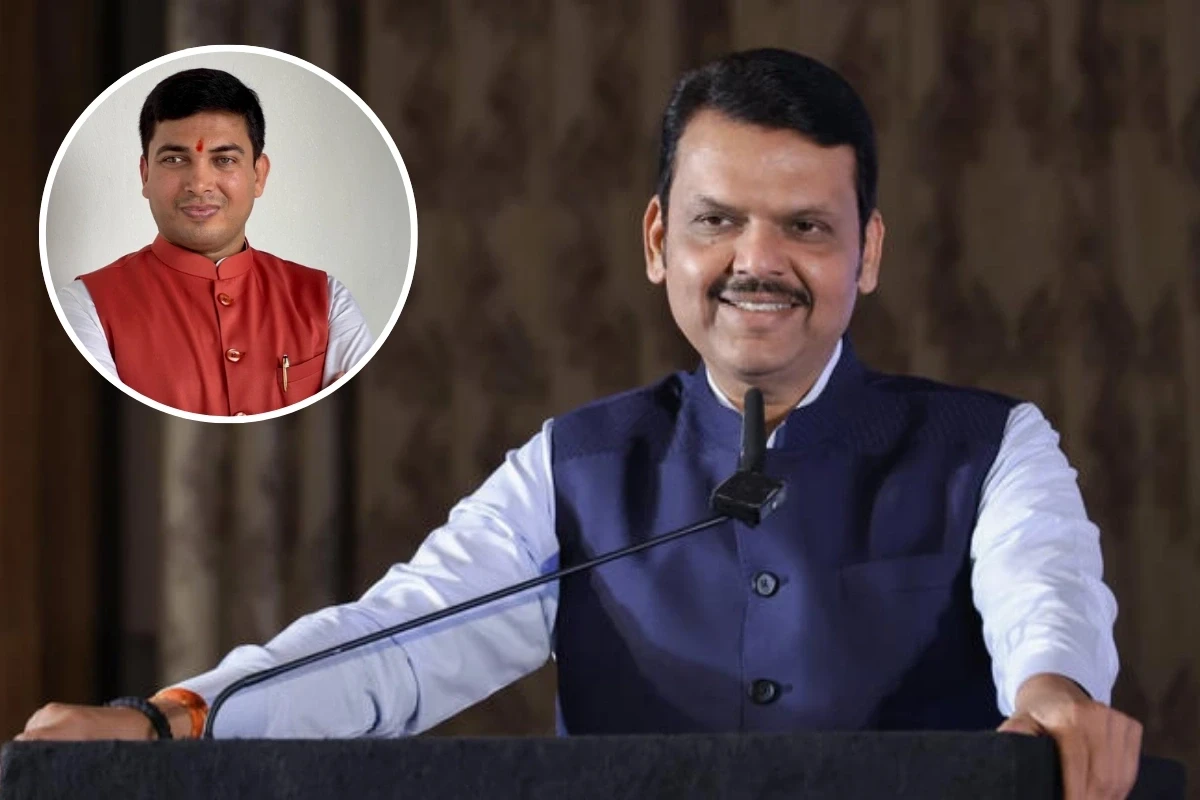Acharya Pawan Tripathi
In the political history of Maharashtra, Yashwantrao Chavan is credited with bringing the ceremonial ‘Mangal Kalash’ to the state after the Samyukta Maharashtra movement.
Vasantrao Naik served as the longest-tenured Chief Minister. However, if anyone deserves credit for bringing widespread development to every corner of Maharashtra, it is the current Chief Minister, Devendra Fadnavis.
Under the leadership of Prime Minister Narendra Modi, CM Devendra Fadnavis has given Maharashtra an unprecedented pace of development.
Today, when Tesla launches a car in India, it is CM Fadnavis’s photograph that is first published in celebration.
Under his leadership, Maharashtra has become the top state in receiving Foreign Direct Investment (FDI).
Under CM Fadnavis, Maharashtra has also reached the top in terms of business. Projects that were stalled for decades were implemented during his tenure.
For example, the Atal Setu, which connects Mumbai to Nhava Sheva and was envisioned back in 1964, was approved, implemented, and inaugurated under CM Devendra Fadnavis’s leadership nearly six decades later.
Similarly, the Mumbai Coastal Road was conceptualised in the 1950s. For decades, it remained only on paper.
Questions were repeatedly raised about it in the legislature, and the government always provided detailed answers.
CM Fadnavis laid the foundation stone for the project in his first term and also inaugurated it during his tenure.
There are two other landmark projects: the Mumbai Metro and the extension of the metro network to the city, which began as part of the Bombay Urban Town Planning 1 initiative in the 1970s.
Only one phase of the Mumbai Metro had been built.
However, metro corridors like Line 2A, Line 7, and Line 3, from approval to inauguration, became possible only during CM Fadnavis’s term.
But during 2019 to 2022, when CM Fadnavis was not in power, the then Uddhav Thackeray government stalled these projects, citing depot land disputes.
Once CM Fadnavis returned to power, these metro projects regained momentum. Not just in Mumbai, even the Nagpur Metro was launched during his tenure.
Metro projects are ongoing in Thane and several other cities.
Before he became CM, infrastructure development was often politicised. Maharashtra’s development was treated with step-motherly concern.
Regions like Vidarbha, long denied a fair share of development, began demanding separate statehood.
But as soon as CM Fadnavis took office, he conceptualised the Samruddhi Mahamarg (Prosperity Corridor) and completed a 700 km expressway during his tenure.
Now, the distance between Nagpur and Mumbai has been drastically reduced to just a few hours.
Since the inauguration of the Samruddhi Mahamarg, the two cities have come closer, both literally and symbolically.
This expressway has silenced those who indulged in negative politics. It has become Maharashtra’s lifeline-and CM Devendra Fadnavis is its visionary.
He also brought development plans to Naxal-affected regions like Gadchiroli.
During his tenure, a revolutionary transformation took place in the road infrastructure of both rural and urban regions.
He placed tremendous emphasis on the Pradhan Mantri Gram Sadak Yojana, resulting in almost every village in the state being connected by road networks.
The state was often severely affected by droughts. In his first term, by linking 11,000 villages to the ‘Jalyukt Shivar Abhiyan’, he turned the vision of water prosperity into reality, helping large parts of Maharashtra become drought-free.
Under the Chhatrapati Shivaji Maharaj Shetkari Samman Yojana, a major debt relief initiative, farmers were provided significant relief.
Across the country, PM Modi’s ‘Make in India’ campaign has shown tangible results.
India is now self-reliant in mobile and automobile manufacturing and a key export player.
Similarly, CM Fadnavis strengthened the ‘Make in Maharashtra’ initiative, which attracted major companies like Foxconn.
Had it not been for Uddhav Thackeray’s brief tenure, projects by Foxconn and Vedanta Semiconductor would have been implemented in Maharashtra itself.
CM Fadnavis organised summits like ‘Magnetic Maharashtra’, resulting in MoUs worth billions. At international forums like Davos, CM Fadnavis attracted investment for Maharashtra like a world-class CEO.
During his tenure, cities like Pune, Thane, and Nagpur underwent complete transformation and were recognised as leading smart cities in the country.
While providing resources to major cities like Mumbai and Pune, he also developed rural areas, raising living standards across Maharashtra.
The people of Maharashtra gave CM Devendra Fadnavis a clear mandate.
They made it clear that only leaders who deliver development and positive politics will succeed.
The above author is the Treasurer of Shri Siddhivinayak Mandir in Mumbai and a member of the BJP.
